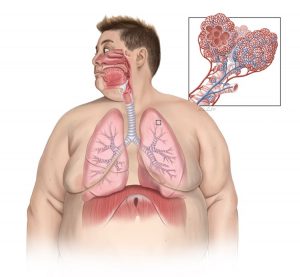
Christopher Sutton: Inclusive visual healthcare resources
For much of healthcare education, the ‘normal body’ as presented in visual teaching resources is White, slim, young, non-disabled, cis-gender and male (Daodu and Ruzycki, 2023). In addition to being ‘inadequate and unrealistic’ (Parker, Larkin and Cockburn, 2017), this ‘normal body’ is a factor in the disparities, biases and barriers faced by many marginalised people regarding student attainment, career progression and patient outcomes (for example, see: Woolf, 2020; Hotine, 2021; Marmot et al., 2020).
Representation matters.
There are many amazing projects and people working on solutions, from Mukwende, Tamony and Turner’s Mind the Gap resource on clinical signs in Black and Brown skin to Chidiebere Ibe’s viral illustration of a Black foetus, which birthed the Illustrate Change project. In fact, my brilliant colleague, Megan Broadbent, is leading our FBMH e-learning team’s living repository of inclusive visual resources (which will hopefully be live soon – watch this space!).
That said, there are still challenges. First, the scale of the disparity is enormous, and we need more images. Second, licensing terms can be restrictive with what educators can do with existing resources, especially in digital spaces, which can particularly limit active learning. Third, there are some blind spots and biases in some well-intentioned efforts, especially regarding disability and trans* representation as well as pervasive weight stigma. And finally, there’s generative AI whose models include and can thus reinforce these biases (and much worse beside).
Through an ITL fellowship called ‘Learning for Every Body’, I sought to investigate these challenges, asking the question: ‘What are good practices for the creation and use of more inclusive visual teaching resources?’
After a lot of research, discussions and reflection and with the support of a lot of people, including two fantastic Student Partner Interns, I recruited a small but remarkable team of artists and models to pilot commissioning more diverse anatomical illustrations. They are:
- Ni-ka Ford, US board-certified medical illustrator and founder of Enlight Visuals
- Lois Jane Holt, MBChB and former anatomy demonstrator at the University of Manchester
- Asiyah Patterson, professional model, formerly represented by the world inclusive Zebedee Talent Agency
- Dawn Clark, first-time model and board member of the US National Association to Advance Fat Acceptance
We critically examined existing norms and created processes that were as fair, transparent and equitable as possible, from pay to licensing terms. They also created a set of rare, if not unique, and certainly beautiful illustrations:

Figure 1. ‘The Muscles of Mastication 1’ by Lois Jane Holt. Used with permission from Lois Jane Holt Copyright © 2024

Figure 2. ‘The Muscles of Mastication 2’ by Lois Jane Holt. Used with permission from Lois Jane Holt Copyright © 2024

Figure 3. Normal respiratory system by Ni-ka Ford. Used with permission from Ni-ka Ford Copyright © 2024
We have a few outstanding questions as we wrap up the project, including where to host the images and their licenses. And we have started to share our findings, including at the incredible Weight Stigma Conference, with plans for further publications.
Until then, if you would like to learn more about the project, including my heartfelt thanks to a long list of supporters and critical friends, please check out the ITL Fellowship project report and feel free to email me at christopher.sutton-2@manchester.ac.uk.
Christopher Sutton – Learning technologist in the Faculty of Biology, Medicine and Health.






0 Comments